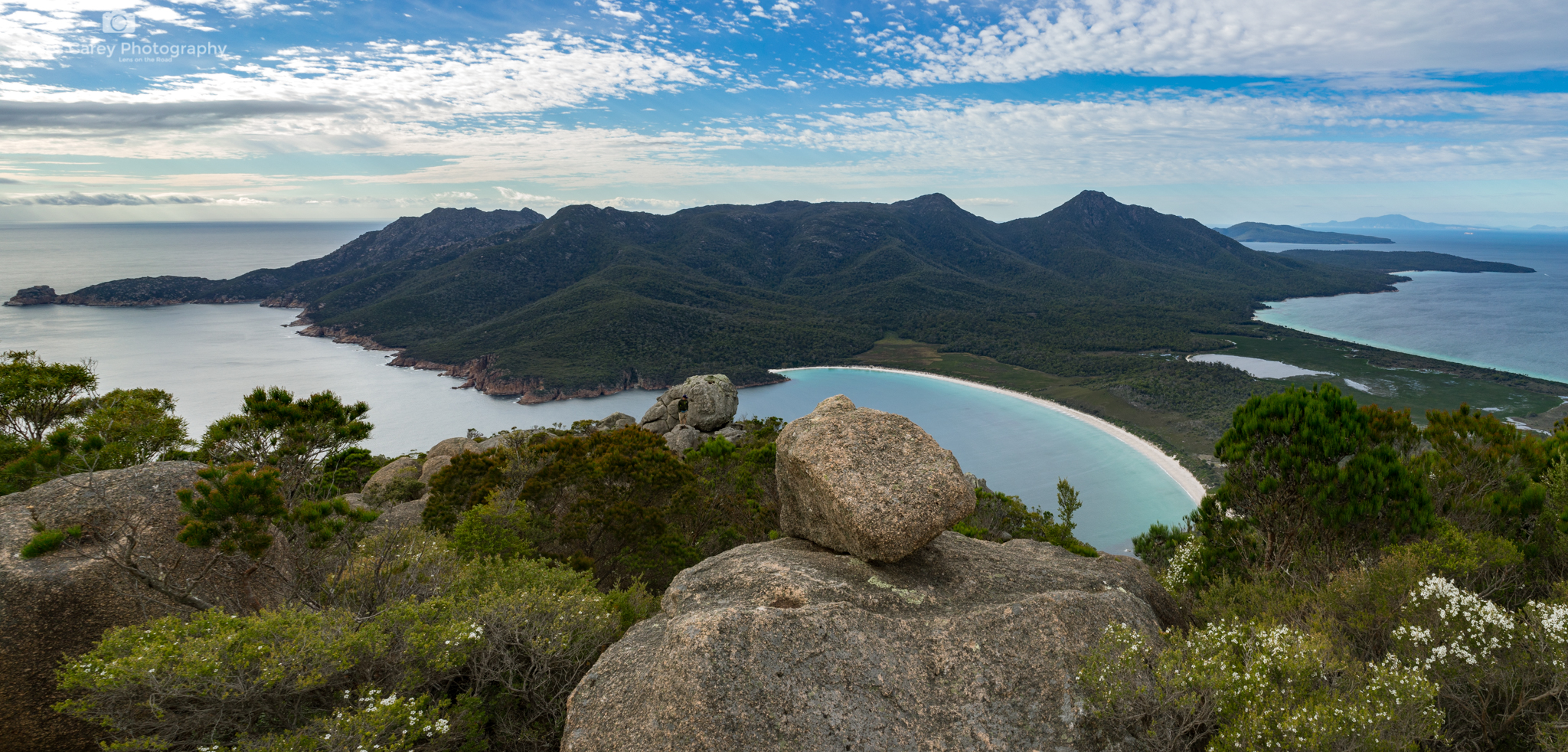his story was covered in issue 59 of 4WD Touring Australia.
That little island at the bottom of Australia has been on the bucket list to explore for a long time. Finally we were able to escape the mainland and get a taste of what is has to offer.
Many long to take a year off and do a lap of Oz. For those that can’t spare the time the next best thing is to take a lap of a smaller heart shaped island at the bottom of the world. While Van Diemen’s Land was once a place of horrors for those that stepped on the wrong side of justice, today Tasmania is an ideal place to explore some of the National Parks it has to offer.
As a ‘mainlander’ we chose to take the car and camper on the Spirit of Tasmania. Departing the ferry we turn right in search of what the wild west coast has to offer. While many head for the popular towns of Strahan or Queenstown, the plan was to seek out the gravel road that weaves like a flowing river along the edge of the Tarkine rainforest. Wanting to make the most of the dirt we leave the highway at Smithton and head to Green Point Beach which overlooks the west tip towards Cape Grim. This small free grassy campsite is a popular spot for surfers who come to experience ocean swells that have travelled hundreds of kilometers over remote oceans before crashing in to the coast.
Not only do the ocean swells travel hundreds of kilometres before reaching the west coast, the ‘roaring forties’, build up momentum having left South America, creating a windswept and wild coastline as though sculptured by a madman with a chainsaw. It’s easy to see why a part of this coast is known as “The End of the World”.
From Arthur River the road heads to the former mining settlement of Corinna. Known as the Western Explorer Road, this easy gravel road takes you along the edge of the Arthur Pieman Conservation Area. Arthur Pieman provides an ideal opportunity to lock the hubs with the Balfour Track the most famous, its 70 metre long canal-like stretch of water often requiring a submarine to get through. As the area is renowned for eating cars this one will have to wait for another time.
Arriving at Corinna, the wilderness retreat has some small but pleasant campsites strung out along the Pieman River. While there may not be any phone reception there is still the ability to get a cold beer at the old Tarkine Hotel.
Corrina is also famous for the Fatman. Not, the person behind the hotel, but the small barge big enough for our car and camper only, to cross the Pieman River.
We spend the next few days enjoying the fact that the kids electronic devices cant connect and explore the walking trails through rainforests with 1000 year old Huon Pines, their branches draped by fluorescent lime green moss.
While the west coast provides a taste of remoteness, we move on to Cradle Mountain National Park, proving an opportunity to don the walking boots and breath in the fresh mountain air. Many make the easy Dove Lake circular walk, while some tackle the famous 6 day overland track between Cradle Mountain and Lake St Claire. We opt for something in between with several long day walks through button grass moors and majestic mountain peaks covered with bursts of red and orange wildflowers like an English garden. The final climb to the summit of Cradle Mountain is only for the brave with vertical boulder hopping that leaves a passing walker trembling as they descend.
Continuing on the lap we make our way to Freycinet National Park. While not a place for off-road driving, the campsite perched on the edge of Great Oyster Bay makes the effort of bringing the camper trailer well worth it. While the popular walk to Wine Glass Bay Lookout gives you a taste of what the park has to offer, to truly experience its white sands, we continue on to the bay and Hazards Beach. The next morning we climb the harder Mount Amos to watch the morning light caress the bay. With adrenalin still pumping we hire Kayaks and slowly glide through the turquoise water exploring the inlets and little bays.
While weeks could be spent at Freycinet we have one more National Park to add to our list, this time continuing up the east coast to the Bay of Fires Conservation Area. While many think the name is due to the fire red and orange algae that covers the boulders, the name was actually given by Captain Tobias Furneaux, in 1773, when he noticed numerous fires along the coast.
Featured on many lists of the top 10 beaches in the World, it is hard to argue against its ranking especially when you can set up camp at one of the numerous free sites along the coast. Despite it being mid summer and the blue water and white sand passing for a tropical island, the cool waters are enough to keep us ‘mainlanders’ from anything more than a refreshing dip.
A few more days are spent exploring the dirt roads of Mount William National Park before completing our lap and returning on the Spirit. The early convicts dreaded the thought of being shipped to Van Diemen’s Land, but we look forward to our next sail across the Bass Straight in search of more dirt tracks and spectacular campsites.













